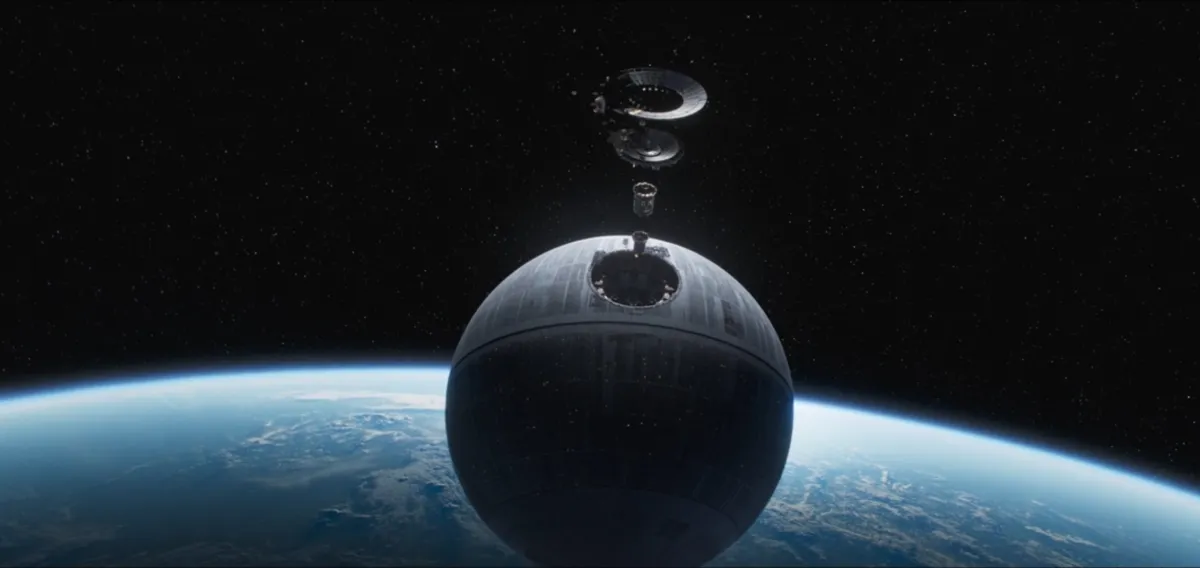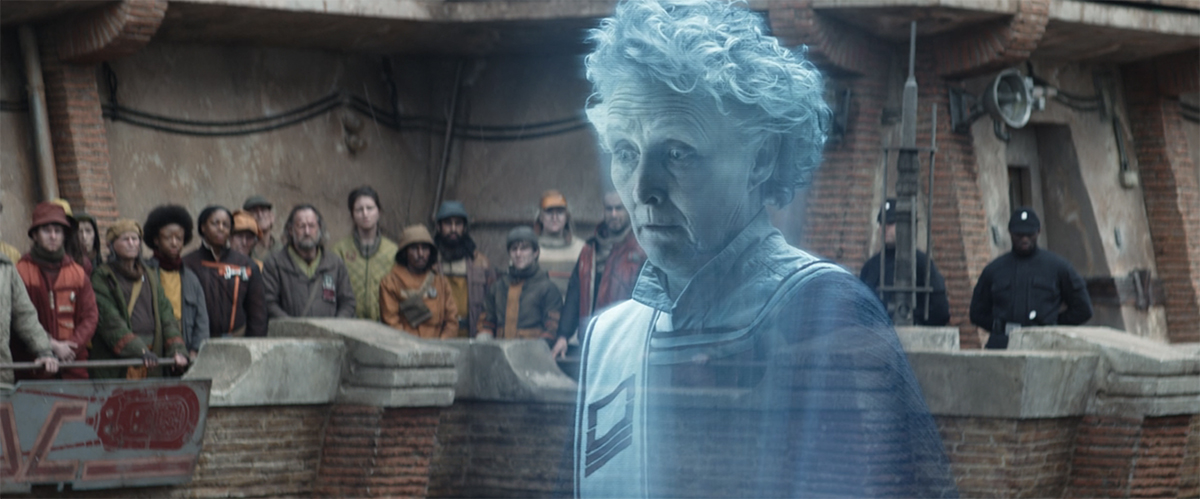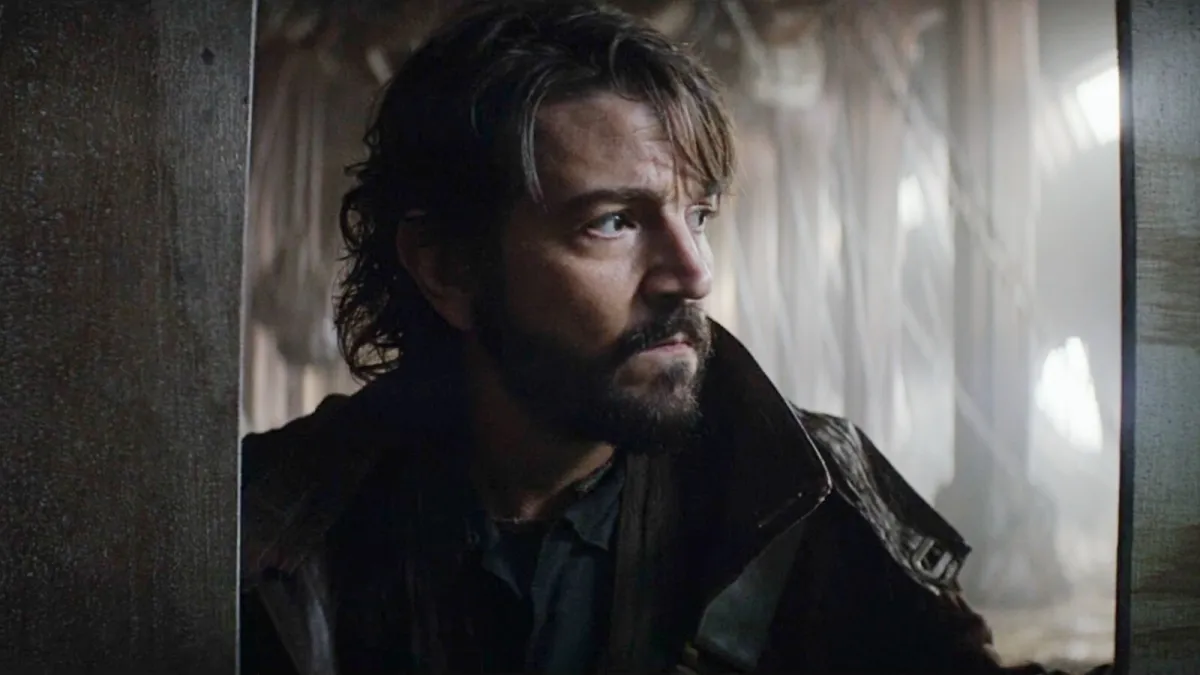The first season of Andor departs from a lot of other Star Wars films and series, leaving lightsabers and Jedi lore behind so that it can follow the lives of the many rank-in-file rebels throughout the galaxy. However, season 1’s post credit scene starts to tie the series into the parts of the Star Wars universe we’re already familiar with—and hints at Cassian’s eventual death in Rogue One.
Major spoilers ahead!
What happens in the Andor post-credit scene?

Remember those big star-shaped parts that Cassian and the other prisoners were building on Narkina 5? You didn’t think the narrative was just going to abandon those things, did you? In the post-credit scene, we see a bunch of spider-like droids fitting those parts into some kind of reflective array. As the camera pans out, we see that the array is one of several large discs floating in space. What could this device possibly be?
You guessed it—the star-shaped parts are holding together the Death Star’s superlaser, capable of destroying entire planets. As the camera continues to pan out, we see the discs arranged over the Death Star itself, which seems to be completed except for the laser. Since the series takes place six years before the events of Rogue One and the original trilogy, we know that the Death Star’s still got a ways to go before it’s fully operational, but it’s getting there.
What does this scene mean for the series?

The shot of the Death Star is especially significant, considering Maarva’s posthumous speech at her funeral. In the speech, Maarva tells the people of Ferrix that they’ve been “sleeping,” and that the Empire is “a darkness reaching like rust” into the rest of the galaxy. Ordinary people have survived by keeping their heads down—but, meanwhile, the Death Star has been secretly inching closer to completion for years. It’s a potent reminder that the more people try to ignore the Empire, the more power it gains. It’s almost as if Star Wars has something to say about oppression in the real world!
The Death Star also starts to bring Cassian’s own story full circle. As we know from Rogue One, he’ll eventually sacrifice his own life to get the plans for the Death Star into the hands of Leia and the other rebels. It’s grimly fitting that by imprisoning him at a factory making Death Star parts, the Empire has forced him to build the very weapon that’s going to kill him. Or, to look at it from another angle: in Rogue One, Cassian will avenge his Narkina inmates by helping to destroy the product of their forced labor.
However you read it, the Death Star shot at the end is a satisfying coda to a series that has largely stayed away from familiar Star Wars territory. As Cassian and Luthen stare each other down in the final scene, we know that the larger drama of the Rebellion and the Empire is playing out in the stars above them.
(featured image: Lucasfilm)










Published: Nov 23, 2022 03:43 pm